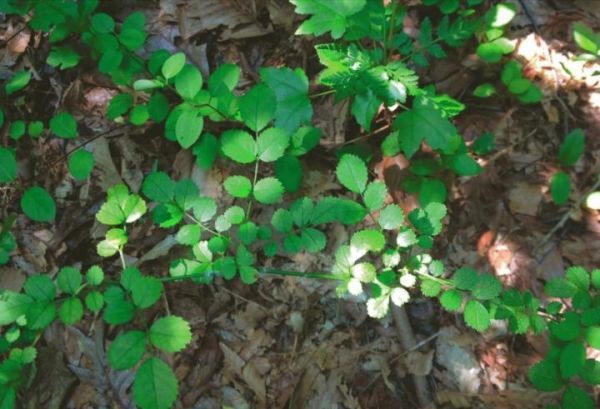A new research study published in the journal Invasive Plant Science and Management tackles those questions and provides insights that can benefit land managers.
Researchers from Miami University investigated the relative importance of seed dispersal, canopy disturbance, and soil disturbance on four invasive species growing in a mature Maryland forest: wine raspberry, Japanese barberry, multiflora rose and Japanese stiltgrass.
They found that proximity to ‘parent’ plants already fruiting in the community was a significant predictor of where wine raspberry, Japanese barberry and Japanese stiltgrass established. Not enough seed sources were found to determine the impact of seed dispersal on multiflora rose.
Read more at Cambridge University Press
Image: A Rosa multiflora (multiflora rose) recruit, along with Lonicera japonica (Japanese honeysuckle), in a treefall gap in the SERC upland forest, near Edgewater, MD in 2014. (Credit: Eva Kinnebrew)


